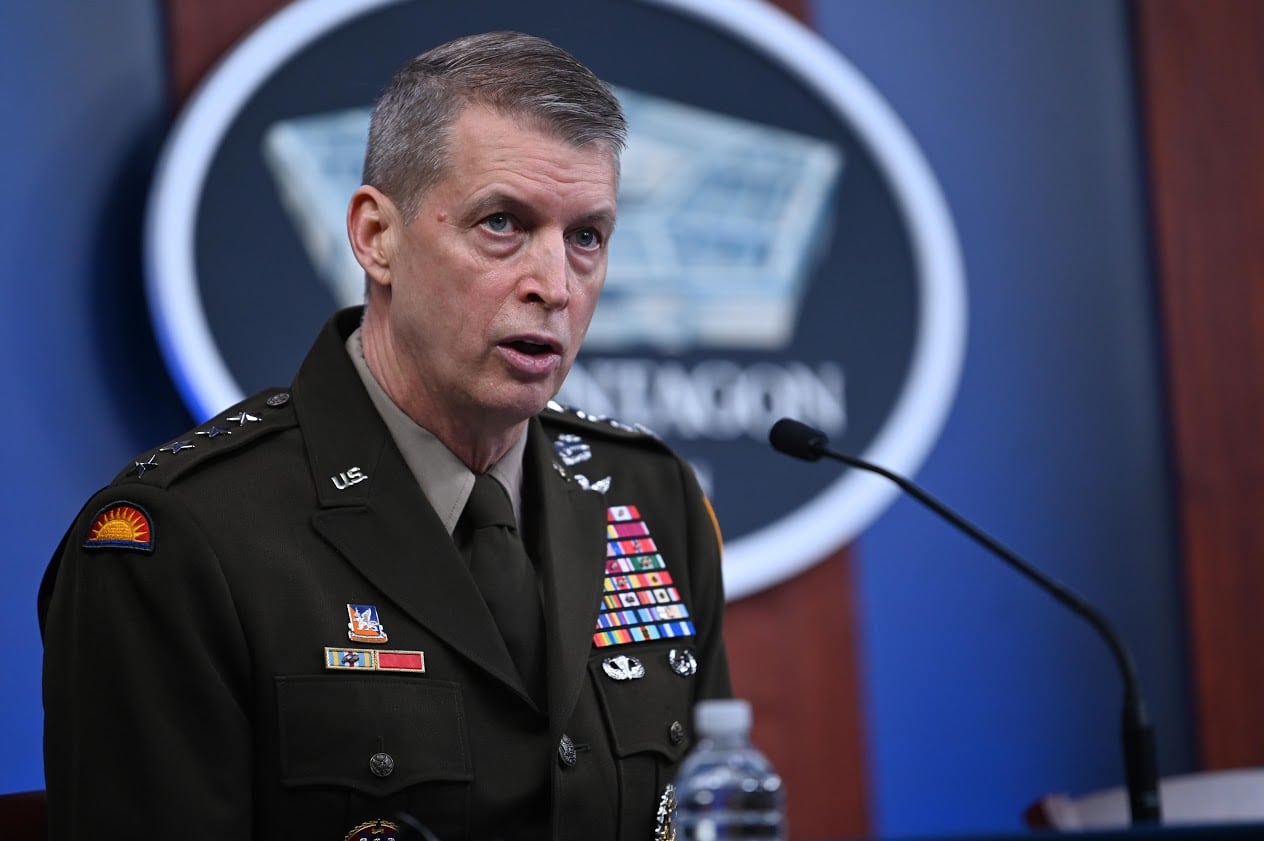The 29th chief of the National Guard Bureau relinquished command Friday, retiring after four decades of service.
Gen. Daniel Hokanson, 61, previously served as the director of the Army National Guard and 11th vice chief of the National Guard Bureau before taking the post as bureau chief in 2020.
The Happy Camp, California, native commissioned as an Army second lieutenant after graduating from the U.S. Military Academy at West Point in 1986.
As an aviation officer, Hokanson served as a scout platoon leader and flight operations officer with 2nd Squadron, 9th Cavalry, 7th Infantry Division, during Operation Just Cause in Panama in 1990. Hokanson left the active Army for the Oregon Army National Guard in 1995.
Through various postings and promotions, Hokanson would later serve in both Operation Enduring Freedom in Afghanistan and Operation Iraqi Freedom, where he commanded the 41st Infantry Brigade during their March 2008 to July 2010 deployment.
Hokanson spoke with Army Times about his four-year tenure as chief of the National Guard Bureau, which oversees the Army National Guard and Air National Guard. Responses have been edited for length and clarity.

Military Times: What was the position of the Guard when you took command?
Daniel Hokanson: If you go back to August of 2020 when I came into the job, it was the height of COVID-19, we didn’t have a vaccination yet. We had a lot of civil unrest across the country. It was a busy time for the Guard. That summer in one day we had 120,000 Guardsmen mobilized for COVID and civil disturbances. We also had several large deployments at that time as well. Then, of course, we had the vaccination late that year. And in early 2021 we had the events surrounding Jan. 6 when we mobilized 26,000 Guardsmen from every state and territory, and they were there for the president’s inauguration. When you roll that into, once again, some serious natural disaster years with wildfires, hurricanes, flooding and then we had the withdrawal from Afghanistan, it was kind of like one thing after another.
What did you draw from that, looking back?
I think the common theme, all of which still amazes me today, is that regardless of what was happening, the Guard met every single mission set they were given. It’s just a testament to the value of having the National Guard. So, when our local capabilities, either here or military capabilities, are exceeded, the Guard is always there to provide capability and capacity when and where our nation needs it.
How has the Guard modernized along with the active Army over these past four years?
Prior to becoming chief, I was the director of the Army National Guard and one of the things we were able to do then was reestablish the division force structure of the Guard. We had all these disparate units so what we did was reestablish the eight divisions in the Guard, and by doing that, the total Army went from 10 divisions, only on the active side, to 18 total divisions when including the Guard. We want to have enough capability to deter somebody from doing anything, so we don’t reach war. When I look at all our formations, I ensure they look like their active-duty counterparts so that when a combatant commander has them deployed to him or her, they can be used just like an active-duty unit. That’s meant upgrading communications equipment, improving maintenance schedules and training for Guardsmen. On the air side we have more than 1,000 aircraft in the Air National Guard. We fly everything except the B-1 bomber and the B-52. We’ve got F-35s. So, we’ve got a lot of experience and capability in our fighter squadrons.

The active Army has struggled with recruiting in recent years but excelled at retention. How’s the Guard doing on that front?
We’re doing extremely well. We’re meeting all our recruiting goals and we’re scheduled to meet our end-strength by the end of this fiscal year. Part of that is due to the proposition that we’re different and we’re looking for a different kind of person. Like the active component, we’re looking for people who want to serve their country, but also people who want to live where they want to live. I think it’s one of the reasons why our recruiting is going so well.
How have Guardsmen adapted to the ongoing pace of deployments that started after 9/11 and has continued?
Everybody in the Guard right now who has come in after 9/11 or reenlisted after 9/11 came in with the expectation that they are going to deploy overseas. On a day-to-day basis we’re probably at 23,000 deployed Guardsmen around the globe. And when I visit these units a lot of these soldiers say, “Hey, I can’t wait for another opportunity to deploy.” That’s part of our model, which is on a five-year cycle for unit deployments. When you go back to Jan. 28 when we had the drone strike on the Al-Tanf garrison in Syria, we had 41 Guardsmen wounded that day. That shows the kind of presence that we’ve got in the Middle East and all over the world. I visited that unit and they really understood the value of what they were doing.
Todd South has written about crime, courts, government and the military for multiple publications since 2004 and was named a 2014 Pulitzer finalist for a co-written project on witness intimidation. Todd is a Marine veteran of the Iraq War.





